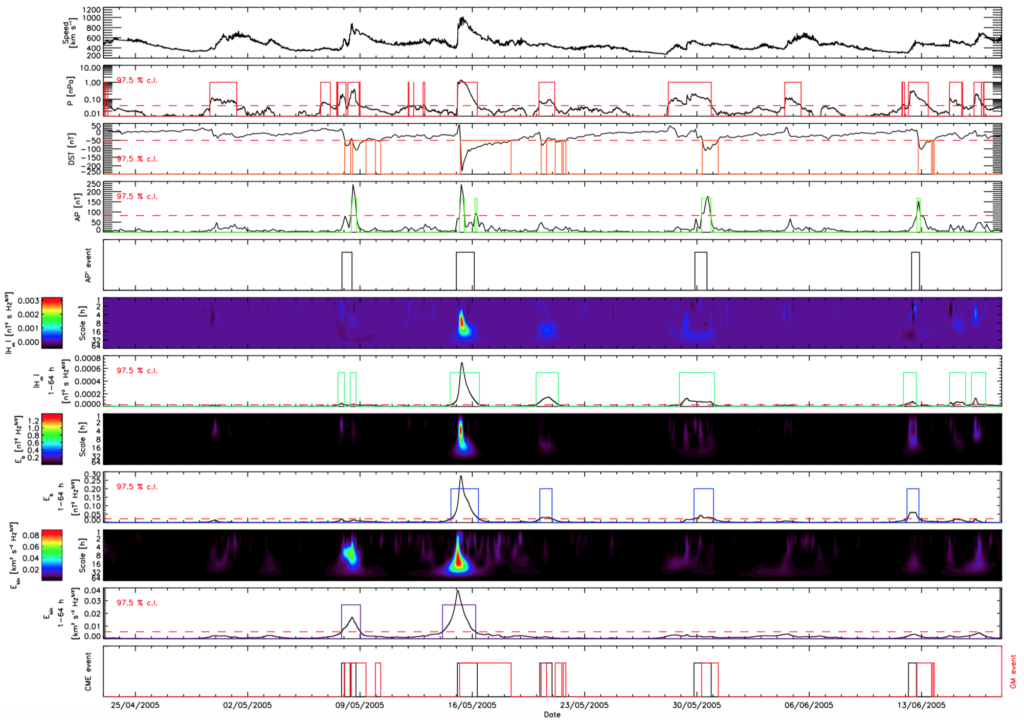Papers from SWICo members
Daniele Telloni , Ester Antonucci, Alessandro Bemporad, Tiziano Bianchi, Roberto Bruno, Silvano Fineschi, Enrico Magli, Gianalfredo Nicolini, and Roberto Susino
A novel tool aimed to detect solar coronal mass ejections (CMEs) at the Lagrangian point L1 and to forecast their geoeffectiveness is presented in this paper. This approach is based on the analysis of in situ magnetic field and plasma measurements to compute some important magnetohydrodynamic quantities of the solar wind (the total pressure, the magnetic helicity, and the magnetic and kinetic energy), which are used to identify the CME events, that is their arrival and transit times, and to assess their likelihood for impacting the Earths magnetosphere.

The method is essentially based on the comparison of the topological properties of the CME magnetic field configuration and of the CME energetic budget with those of the quasi-steady ambient solar wind. The algorithm performances are estimated by testing the tool on solar wind data collected in situ by the Wind spacecraft from 2005 to 2016. In the scanned 12 yr time interval, it results that (i) the procedure efficiency is of 86% for the weakest magnetospheric disturbances, increasing with the level of the geomagnetic storming, up to 100% for the most intense geomagnetic events, (ii) zero false positive predictions are produced by the algorithm, and (iii) the mean delay between the potentially geoeffective CME detection and the geomagnetic storm onset if of 4 hr, with a 98% 2-8 hr confidence interval. Hence, this new technique appears to be very promising in forecasting space weather phenomena associated to CMEs.
Publication: Telloni D., Antonucci E., Bemporad A., Bianchi T., Bruno R., Fineschi S., Magli E., et al., 2019, ApJ, 885, 120. doi:10.3847/1538-4357/ab48e9
https://iopscience.iop.org/article/10.3847/1538-4357/ab48e9/pdf
